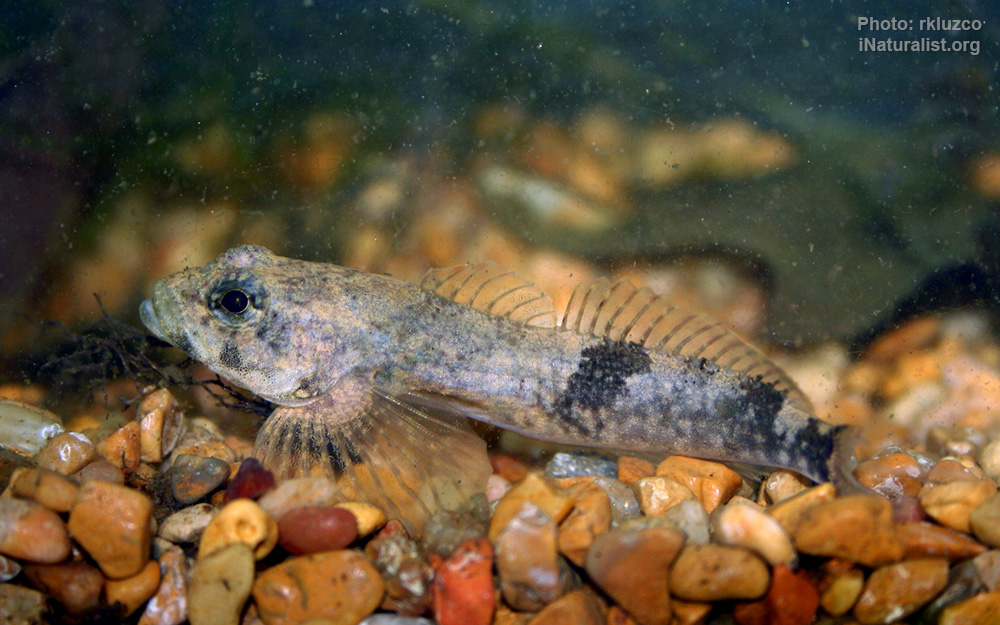Slimy sculpin
(Cottus cognatus)

Classification
General data
The slimy sculpin (Cottus cognatus) is a freshwater species of fish belonging to the family Cottidae, which is the largest sculpin family. They usually inhabit cold rocky streams or lakes across North America, ranging from the Great Lakes, southeast Minnesota, northeast Iowa, southwest Wisconsin and northeast Canada.
Slimy sculpins have also been found roaming the cold streams of eastern Siberia.
They are commonly confused with their closely related relatives, Mottled sculpin (Cottus bairdi), and with tubenose gobies who are both freshwater fishes as well.
The slimy sculpin is a nocturnal fish that usually spends most of its time on the stream bottom and seeks shelter under rocks and logs, especially during spawning season. When it swims, it sometimes appears to be hopping along the bottom because of its inefficient ability to swim. This is partly due to the absence of a swim bladder, which normally gives buoyancy to a fish.
The fish has been studied in waters where there is current freshwater acidification. Sculpin were found to be less active and have lower rates of reproduction when found in these waters. For these reasons, slimy sculpin have been identified as a good indicator species for changes in acidification among lakes, ponds, and streams.
Slimy sculpin are native to the United States, Canada, and the Russian Federation. In North America, slimy sculpins are found mainly in Lake Superior and its tributaries, Lake Michigan, and small cold streams found in southwestern Wisconsin, as well as the upper Mississippi River basin. They have also been found in other areas of North America such as southeast Minnesota (mostly in the Mississippi River), northeast Iowa, the upper Columbia River, Alaska, and most all of Canada, especially in Ottawa. Slimy sculpins have also been found in eastern Siberia, Russia.











